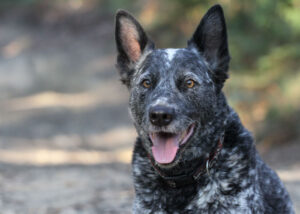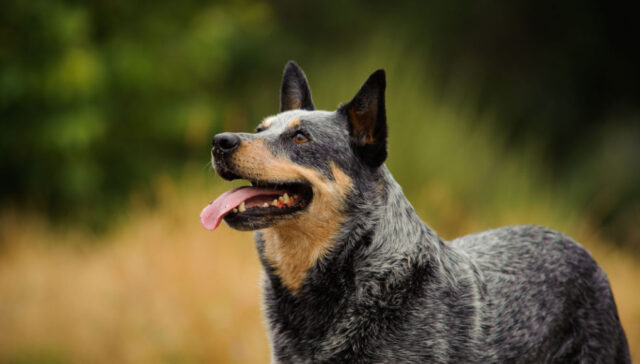
Table of Contents
Have you ever wondered about what it's like living with an Australian Cattle dog at home? Will this high-energy pooch make great companions for your family?
Well, you’ve come to the right place.
In this article, we'll discuss everything you need to know about this breed.
And we’ve compiled the most-asked questions on the Internet just for you.
From their physical traits to the most interesting facts, we've got you covered!
Australian Cattle Dog Breed Overview
Also known as cattle or heeler dogs, the Australian Cattle dog is popular for its active lifestyle—especially at the farm!
Heeler dogs are great companions for herding your livestock and farm animals.
They look out for your barn animals when they’re out in the field or lead them back to safety before sunset.
That said, it’s safe to say that having them around makes farm chores a lot easier.
Trivia: Australian Cattle dogs (ACDs) are also known as blue or red heelers based on their coat color.
Generally, heeler dogs are an absolute favorite for fun activities.
But can you keep them at home with your family, too? Read on to learn more interesting facts about them!
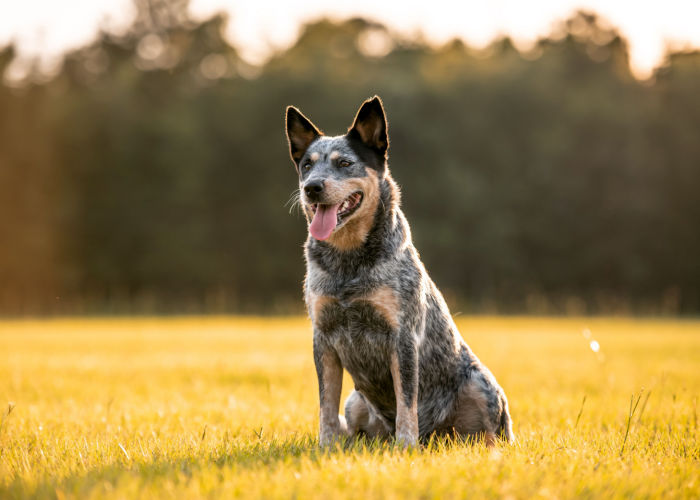
Brief History of the Australian Cattle Dog
From the name itself, heeler dogs are the first successful herding breed in Australia.
Before their breeding, taming wild beasts was a huge struggle for farm dogs in the 1820s.
Existing cattle dogs at the time also had difficulty in herding for longer distances. Not to mention the harsh climate conditions in Australia.
Fortunately in 1825, Thomas Hall, a renowned breeder and owner of huge farms in Australia, crossed an English herdsman's pooch with an Australian wild dog Dingo.
With his herdsmen, Hall introduced his newly-bred cattle dogs as farm companions.
This new breed of herding dog is excellent at controlling the flock by nipping at the cattle’s heels. Hence, the term Hall’s heelers.
Hall’s exceptional breeding skills and intelligence bridged new experiments.
Interestingly, heeler dogs are the only successful cross-breeding test in the world in terms of producing a functioning offspring between a domestic and a wild dog.
However, the breeding blueprints by Thomas Hall were no longer accessible when he died in 1870.
Physical Traits
Sometimes, picking which dog breed to own is like love at first sight.
So, let's dive into the heeler dog's physical profile and see if you're a great match.
Height and Weight
The Australian Cattle dog is a medium breed with a height of 17-20 inches long and weighs 35-50 pounds.
Body
The Australian Cattle dog has a lean, solid frame that reflects power and stamina. Their body proportion helps them engage in herding tasks and other farm activities.
Eyes and Ears
Australian Cattle dogs have oval-shaped eyes with raised ears.
Tail
The Australian Cattle dog has a long, undocked tail, according to kennel clubs.
However, some heeler dogs are born with a bob or short tail due to genetics.
Fun fact: The Australian Cattle dog is often confused with the Australian Stumpy Tail Cattle Dog. The Stumpy is another herding breed with natural bobtails that are descendants of Hall's heelers.
Coat
The Australian Cattle dog has a short and smooth coat with a mottling or speckling pattern. Their coat color ranges from gray to blue and red.
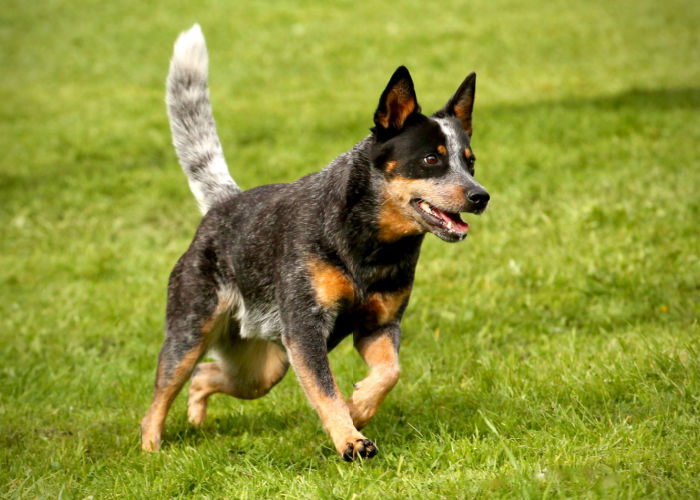
Personality of an Australian Cattle Dog
Australian Cattle dogs are extremely outgoing. They love vigorous activities to avoid stress.
Moreover, heeler dogs bark on rare occasions to alert their owners or other farm animals.
They’re also leaders of the pack. So, it takes time for them to get along with other pets or animals.
But most of the time, it’s better not to force a heeler dog to be friends with other pets, especially when they’re old enough.
This is to avoid behavior issues or aggression at home.
Living Conditions
Australian Cattle dogs aren’t ideal for apartment living, no matter how cozy it may be.
With their herding instincts in mind, it’s difficult to neither leave them alone, even for a day.
That said, heeler dogs can make the most of their physical and mental needs out in the open.
To stimulate your heeler’s mood, you can let them play in your backyard. However, be sure to keep your fence closed and high as much as possible.
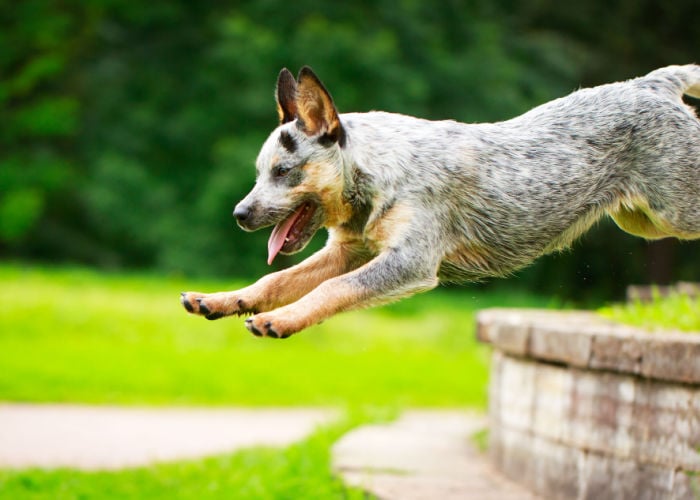
Australian Cattle Dog Health
The Australian Cattle dog is prone to congenital hereditary sensorineural deafness (CHSD).
CHSD occurs from the loss of sensory functions in heeler dogs weeks after birth.
Many resources online link this disability to their coat color. However, a study debunks this claim.
In fact, deafness in heeler dogs is closely associated with sex and is more common in females.
“What are the symptoms of deafness in dogs?”
In general, dogs with hearing loss may show the following symptoms:
- Less active
- Inattentiveness
- Excessive barking
- Shaking or tilting their heads
Life Span
The average life span of an Australian Cattle dog is around 12-16 years. This depends on several factors, such as living conditions and diet.
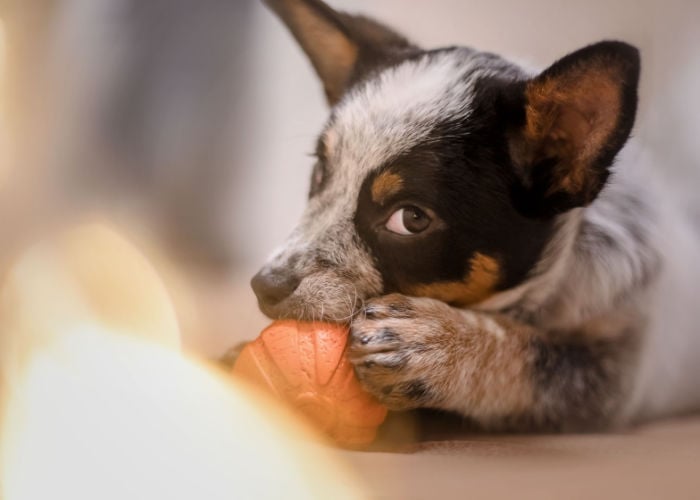
11 Surprising Facts About An Australian Cattle Dog
1. Heeler Dogs are Celebrity Favorites
Along with German Shepherds and Pomeranians, heeler dogs also take the spot as celebrity favorites.
American actor Owen Wilson is often spotted hanging out with his ACD Garcia on the beach or in the streets.
A paparazzi even once photographed Owen and Garcia in his car while heading to a Hollywood club. Garcia even did a cameo for Owen’s film Marley & Me in 2008.
Moreover, Australian Cattle dogs seem to appeal to Matthew McConaughey, too!
Foxy is often spotted with her famous fur dad running at the Malibu shore.
According to McConaughey, Foxy is “a great athlete and incredibly active.”
2. Top 10 Most Intelligent Breed
According to researcher Stanley Coren, heeler dogs are one of the world’s smartest breeds.
In his book The Intelligence of Dogs, ACDs ranked at the 10th spot.
ACDs are highly active, and they love the outdoors so much. They can sometimes outsmart their owners, too.
Interestingly, Coren’s investigation of dog intelligence is based on 3 major aspects:
- Instinctive or inherited traits
- Adaptive or social awareness and environment learning
- Working and obedience or the ability to follow and comprehend (i.e. training)
Furthermore, Coren’s top 10 list focuses on general intelligence, not their unique breed traits and abilities.
The study focused on the dog’s ability of the following:
- Solve problems
- Level of obedience
- Learning pace on new commands
Trivia: Most dogs can learn up to 165 words, while other canine breeds can master more than 250 with regular training.
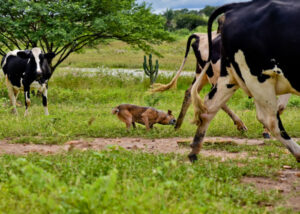
3. Heeler Dogs Have Weird Herding Behavior
Heeler is a unique name associated with Australian Cattle dogs.
But there’s an intriguing reason why they’re called such—they bite or nip livestock animals in the heels.
You might ask:
“Why do heeler dogs bite you or other animals at the heels?”
They bite livestock animals at the heels to lead them in a particular direction.
The same heeler dog habit is seen when they're at home. They may nip you in the heels due to their herding instinct.
Trivia: Heelers started gaining popularity in the 1800s in Australia as farm dogs. They’ve been sold everywhere by ranch owners and farmers for this purpose.
4. A Heeler Dog Once Held a Guinness Title
The Guinness World Records once recognized an Australian Cattle dog as the oldest to have ever lived.
Bluey was born in 1910 and lived until 1939 in Rochester, Victoria, Australia. She was 29 years and 5 months old when she passed away.
Recently, Bluey was outranked by a Portuguese canine Bobi as of February 1, 2023.
At 30 years and 266 days old, Bobi holds 2 Guinness titles—the oldest living dog and the oldest dog ever.
5. They’re Born With a White Coat
Australian Cattle dogs are known for their striking red or blue-gray coats.
However, ACDs are naturally born with white fur. This is because of their Dalmatian ancestry.
Moreover, heeler dogs develop their multi-colored coats in weeks as they grow.
They can have either mottling or speckling patterns on their coat, too.
Trivia: Australian Cattle dogs are also known as red or blue heelers. Their nicknames correspond to their coat color.
6. They Have Great Survival Instincts
Temperature tolerance is one of the many assets of Australian Cattle dogs.
Since they’re great for farm and livestock herding, red or blue heelers can live outside.
They can also survive hot and cold weather conditions. However, the ideal temperature for ACD breeds is around 50-70 °F (10-21 °C).
Note: Always provide your ACDs with weather-proof shelter outside to ensure their safety.
Furthermore, an incredible account of survival by a heeler dog could be Sophie Tucker's story.
Sophie survived living alone on an island in Australia for 5 months. She went missing while sailing with her fur parents in November of 2008.
Accordingly, Sophie swam 5 nautical miles to St. Bees island, which is home to many wild animals.
As her means of survival, Sophie hunted wild goats and kept herself safe by digging holes underground.
Fortunately, Sophie was found by rangers and got reunited with her fur parents. A book inspired by Sophie’s story was published in 2013 by author Emma Pearse.
7. The Bentley Mark in Cattle Dogs
Australian Cattle dogs may differ in their fur color and physical appearance.
But they have this 1 distinctive physical trait —the Bentley mark.
The Bentley mark refers to the white patch of fur on their forehead.
And most ACDs have this characteristic regardless of their fur color. Bentley marks can be a large patch of white fur or a small one with a few white strands.
So, why is this mark specifically called Bentley? Well, this is associated with a certain Tom Bentley.
Bentley once owned a purebred ACD from Thomas Hall, the famous dog breeder during the 1800s in Australia.
Bentley’s dog was pretty much used as the prototype for breeding after Thomas Hall died in 1870.
Hence, the white patch on the forehead is a direct attribute of Bentley’s dog strain.
8. They’re Related to a Predator Breed in Australia
Yup, you heard that right.
These lovable Australian Cattle dogs have predator roots from a Dingo. That’s because ACDs were products of continuous careful breeding.
In the 1800s, Australian breeders came up with the perfect herding dog (ACD) with DNAs allegedly coming from the following:
- Dalmatian
- Bull Terrier
- Black and Tan breeds
- Timmon’s Biter’s (Dingo and Collie mix)
- Hall’s Heelers (Blue-merle Collie and Dingo mix)
Moreover, Australian Cattle dogs are working breeds and are very helpful for livestock farming.
In fact, they were bred meticulously in line with this purpose.
9. High-Energy Buddies
ACDs are extremely energetic. As herd dogs, they need lots of exercise and activities.
This is ideal for their mental and physical condition. Moreover, a lack of physical engagement may result in destructive behavior due to boredom.
So, if you’re a parent of an ACD, you can try the following activities aside from herding:
- Flyball
- Treiball
- Toy pick-up
- Morning jogging
- Word or language training
Australian Cattle dogs are also brilliant and obedient. They can easily follow instructions and orders.
Trivia: The Australian Cattle dog can learn new tricks in 5 repetitions or less and have at least a 95% success rate.
10. Australian Cattle Dogs are Great Lifesavers
Animals have their special and unique ways of making humans love them or make their hearts flutter.
But this incredible story of an Australian Cattle dog saving his owner is mind-blowing.
In 2007, an ACD named Teka performed CPR on his owner, who collapsed from a major heart attack.
According to the attending physicians, dog owner Jim could’ve died if Teka wasn’t around. This heroic fella even barked hard to get people’s attention.
As a result, this heartwarming story of loyalty and love gained much attention, and Teka received an award from RSPCA, an animal welfare and charity organization.
Moreover, the RSPCA nominated Teka for the highest bravery medal – the Purple Cross.
But for Teka’s owner Jim, his gratitude for his furry companion is beyond any recognition.
11. Heeler Dogs Have a Water-Resistant Coat
Australian Cattle dogs have short, double coats.
Interestingly, their outercoats are water and dirt-resistant. This keeps them dry while working outdoors during the rainy season.
Moreover, ACD’s grooming requirements aren’t that complicated. They shed twice per year and require minimal brushing at least twice a week.
They also need bathing once per month, though checking their overall condition is important, such as ear mites or infections.
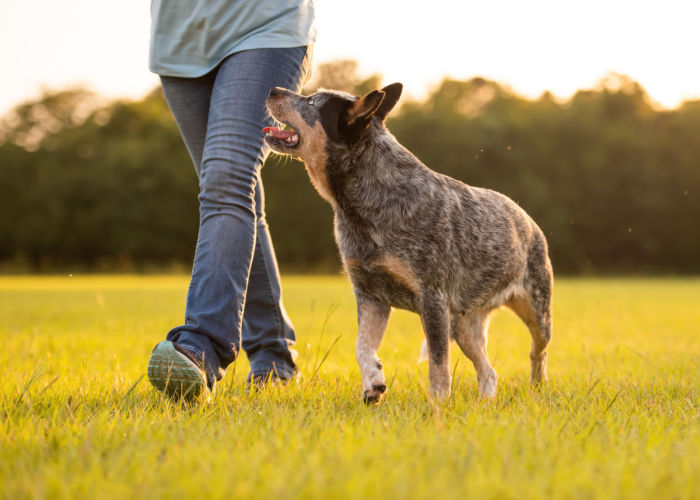
How Australian Cattle Dogs Protect Their Owners
Australian Cattle dogs can control their aggression.
However, they can be very protective of their herd or owners when they perceive danger.
That said, heelers are ideal watch or guard dogs for your family.
Interestingly, patrolling within your property comes off naturally for them, and they can alert you when they sense a threat nearby.
Their dark coat color also makes them appear invisible at night, which could help prevent bad guys from lurking in your home.
Australian Cattle Dog: FAQs
Are Australian Cattle dogs great for children?
Australian Cattle dogs are great and affectionate companions for your family. However, they’re best around older kids who have experience living with active dogs like ACDs.
When planning to get a heeler dog, be sure to supervise your kids all the time.
Are Australian Cattle dogs great with other pets?
Australian Cattle dogs are great around pets at home, especially when they’ve been socialized well at a young age.
However, ACD’s controlling and herding instincts may dominate once they’re introduced to new pets or animals.
Do Australian Cattle dogs make good service dogs?
Australian Cattle dogs can make great service dogs. They’re not only farm or herd dogs. They’re extremely intelligent and highly trainable, too.
ACDs are loyal and lovely companions at home, which makes them great service dogs.
Can Australian Cattle dogs be left alone?
Australian Cattle dogs may not be suitable to be left alone, especially if they’ve established a great and deep bond with their owners.
They’ll likely show aggression or destructive behaviors when they're stressed out. Plus, ACDs love the outdoors. So, let them walk or jog with you whenever you can.
Australian Cattle Dog Breed: Conclusion
Letting an Australian Cattle dog into your home can be an exciting journey.
They’re loyal, affectionate, and intelligent that can follow instructions in a snap of a finger.
However, pledging to be a heeler dog parent would require you to take the extra mile to keep up with their needs.
Plus, these hard-working cattle dogs love spending time outdoors. So, it’s strongly discouraged to leave them at home alone.
Moreover, Australian Cattle dogs can suffer from stress and show aggression as a result.
We recommend spending quality time with them regularly walking and jogging, or their absolute favorite—herding the flock!


